As the first fall cold fronts begin to roll in, all animals begin to stir. Most notably whitetails begin to feel a stir of hormones and anxiety prompting the urge to breed. Scrapes begin to appear beneath particular trees (normally the same branches each season), bark is shredded as bucks vent frustrations and create rubs, but most importantly to the hardcore whitetail hunter, big bucks begin to appear as if by magic.
The seasoned hunter begins to notice the first scrapes and rubs of the season, several weeks prior to actual breeding activities. These are normally created by smaller, subdominant 2- and 3-year-olds, feeling their oats and being frustrated. Mature bucks are still kicked back, waiting for the real show to begin. Keep a close eye on these scrapes enhanced with http://www.wildlife.com/ , though, and you’ll eventually notice increased activity and a washboard of new bucks appear, signaling that serious movement has begun.
For serious whitetail hunters, the late October and November ruts mark the best deer hunting has to offer, not only in terms of increased movement but because it’s when normally nocturnal bucks begin to appear during legal shooting hours, giving you the opportunity at a shot.
What we all dream of seeing when we pull trail camera cards! Hunting #RutTracker2017 with Stealth Cam Wildlife Research Center, inc.
Posted by Hunting on Saturday, November 25, 2017
The Hunting Pages 2017 Rut Tracker was a huge success in documenting real-time trail camera footage from https://www.stealthcam.com/ trail cameras strategically placed on several different farms and bringing that footage to your fingertips within 48 hours, as to what was going on in the whitetail woods. We came up with some rut markers that coincided with the wind, weather, moon phase and hunting pressure from the trail camera footage, which will help plan for the 2018 rut and help you understand whitetail movement patterns this fall.
Real Time Rut Markers
September 20-29 — moon phase; First Quarter temperature variation: lows in the 40s and highs ranging from 65 to 80; barometric pressure flex: 27.4 to 33 being the highest. Exclusively nocturnal buck photos and videos dominate this period. Food is the only thing a buck has on his mind in late September.
October 5-11 — moon phase: full moon, visible 100%; temperature variation: from low 30s to highs in the 70s; barometric pressure flex: between 29.6 and 31.2 being the highest. Temperature in the camera setups this week ranged from lows in the 30s to highs in the 70s. Pressure was between 29.6 and 31.2 being the highest. Deer movement was still mostly nocturnal in this time frame, with some daylight appearances in and around food sources at last dusk and dawn. Interestingly, in this time frame, there was no deer movement on the camera between 10 a.m. and 3 p.m.
October 13-18 — moon phase: last quarter, visible 40%; temperature variation: first frost has arrived and highs mainly being in the 50s and 60s; barometric pressure flex: 27.3 to 32.6 being the highest. Some mature bucks were witnessed during last half hour of daylight making appearances on green food sources. Scraping activity picked up in this window, and bucks were documented becoming more and more solo.
October 19-25 — moon phase: new, visible 1%; temperature variation: cold mornings are common and evening sits on food with cooling evening temps into the 40s; barometric pressure flex: 28 and highest being 32.7. New bucks began showing up on cameras in this window and were documented working scrapes more frequently. Mature bucks are showing more interest in doe groups, but food is still at the top of the menu. In the evening, they sit around food sources or pinch points around destination feeding fields, which are key in this window.
October 26-31 — moon phase: first quarter, visible 37%; temperature variation: lows with 28 being the lowest and highs mainly in the 50s; barometric pressure flex between 27.8 and 33.1. Buck activity is ramping up and many mature bucks are being documented increasing their patterns in hopes of grabbing the first available doe. Hunting fringes of doe bedding areas and funnels and pinches leading to and from food to cover is a great tactic. Try and put eyes on the most ground you can while still being able to hunt tight.
November 2-5 — moon phase: waxing gibbous, visible 96%; temperature variation: lowest being 19 degrees, highest being 52; barometric pressure flex: between 26.8 and 31.9. Daylight activity has flipped to 50/50 with many 2.5- and 3.5-year-old bucks making daylight appearances, checking scrapes on a daily basis in and around doe bedding area and evening feeding blocks. Morning sits can now be productive as you may get lucky to catch a buck coming back to bed late from spending time chasing the ladies.
November 4-7 — moon phase: full moon, visible 100%; temperature variation: lows ranging from 26 to 32 and highs ranging from 47 to 61; barometric pressure flex: between 27.8 and 29.4. Mature bucks are covering a lot of ground and car accidents involving bucks is a sure sign of bucks crusing to find any available doe. All day sits are possible but the majority of mature bucks are still 65% nocturnal on our stealth cams.
November 8-13 — moon phase: waning gibbous, 76% visible; temperature variation: lows ranging from 22 to 36 and highs ranging from 34 to 66; barometric pressure flex: between 27.8 and 33.1. Like magic, mature bucks are cruising doe bedding areas and traveling during daylight, the most we have documented all season off of camera data. All day sits would surely produce an opportunity anywhere a buck may be cruising or chasing does. Now is the time to be in your best stands and dig in!
November 15-22 — moon phase: waning crescent, 9% visible; temperature variation: lows ranging from 17 to 26 to highs ranging from 28 to 46; barometric pressure flex 26.9 to 32.4. New bucks are showing up on the cameras daily, but most of the big mature bucks are not moving very far as they are breeding with available does and have virtually dispersed off of our camera survey. Hunt exclusively doe bedding and social areas, hoping that a doe drags out a target buck. Hunt your stands to always play the wind and so you can enter and exit without disturbing deer.
November 24-30 — moon phase: waxing crescent, 30% visible; temperature: lows ranging from 15 to 26 and highs ranging from 24 to 35; variation barometric pressure flex: 28.2 and 32.7. Some rutting activity is still being documented on the cameras but mainly by bucks from 1.5 to 3.5 years of age. The mood has shifted back to food and bucks trying to replace body weight before going into winter under sub-par conditions. Food is the key from here to the end of deer season.
The unpredictability of the rut can be frustrating. All the time and effort spent patterning a particular buck go out the window when the deer suddenly disappear off of cameras or gets harvested by another hunter. It’s why so many hunters believe that once the rut is in full swing, you can throw all the camera and scouting information you learned about a particular buck’s movements out the window. But The Hunting Pages Rut Tracker showed us that buck movements were subdued during certain phases of the rut because certain bucks don’t always leave their home ranges (where they spend 95 percent of their time); they were just more calculated in their movements during the rut. Those that were absent from the cameras were not gone for very long from where we had videos of them in October.



















![The Best Deer Camp Chili [VIDEO] Deer Chili Ingredients, Tomatoes, Chili Spices](/wp-content/uploads/2015/10/Deer-Chili-Deer-Camp-Recipe-218x150.jpg)
![How to Call Elk Early in the Season [VIDEO]](/wp-content/uploads/2016/08/byers003-218x150.jpg)

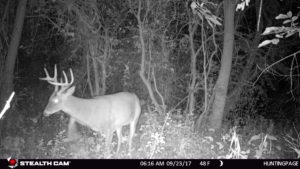
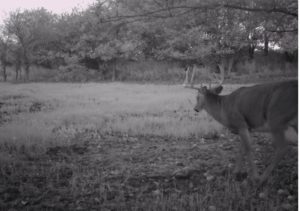
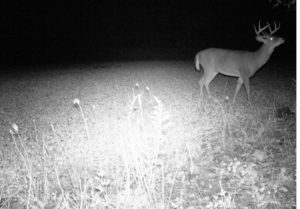
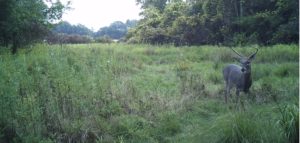
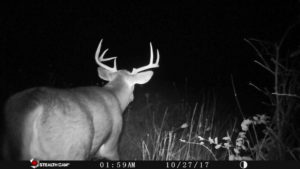
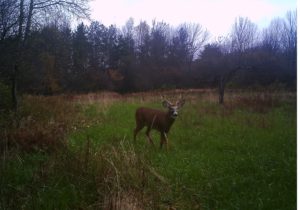
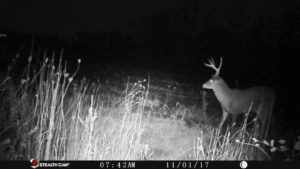
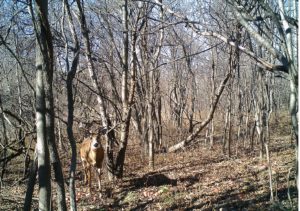
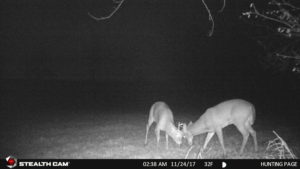
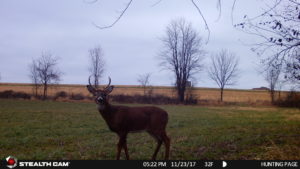


![Idiots Disturb Hunter: How Would You Have Handled It? [VIDEO]](/wp-content/uploads/2015/10/DSC00110-e1474487693878-100x70.jpg)
![Albino Buck Shocked to Shed His Antlers [VIDEO]](/wp-content/uploads/2015/10/AlbinoDeer-100x70.jpg)